HISTORY
From the year 1100, the lands around the old city of Barcino were surrounded by villages, farms and farmhouses. These lands played a major role in the economy of the city.
In the 1840s, the fishermen and industrial workers settled in the old town of Poblenou to be close to their workplace: the factories and the sea.
Sea and land have always been important resources for the city of Barcelona. Where do they stand in our modern day technology and how can they contribute in our self-sufficient neighborhood?
CONTEXT
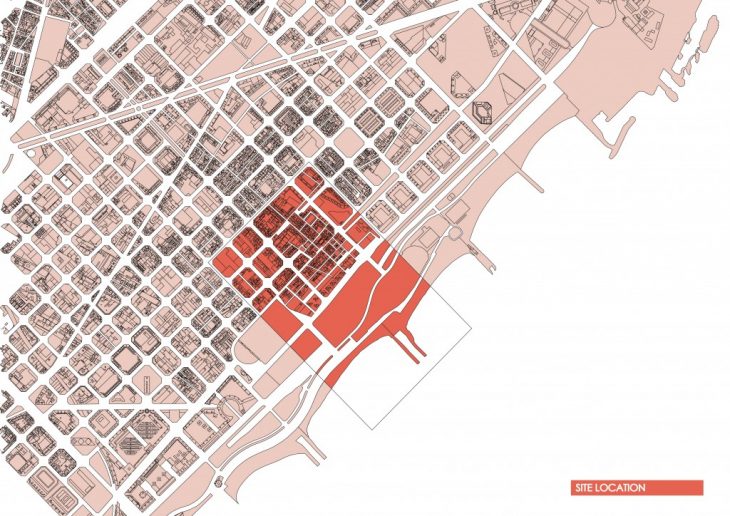
How can sea and land give back to its neighborhood? Two different strategies are applied: 1- Retrofitting the historic buildings as a passive strategy 2- Grey water collection for irrigation, urban farming area for food production and social awareness and energy production from the tidal power as an active strategy.
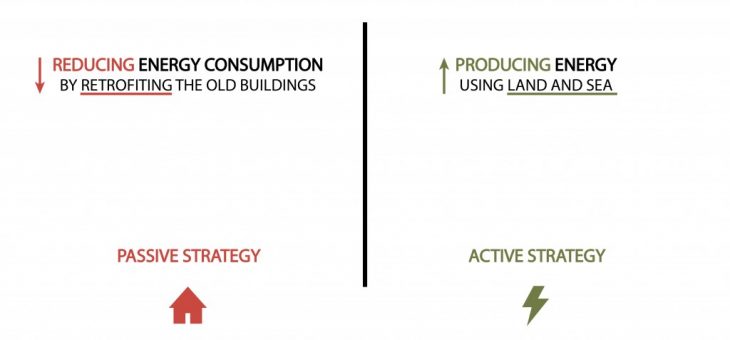
INTERVENTION
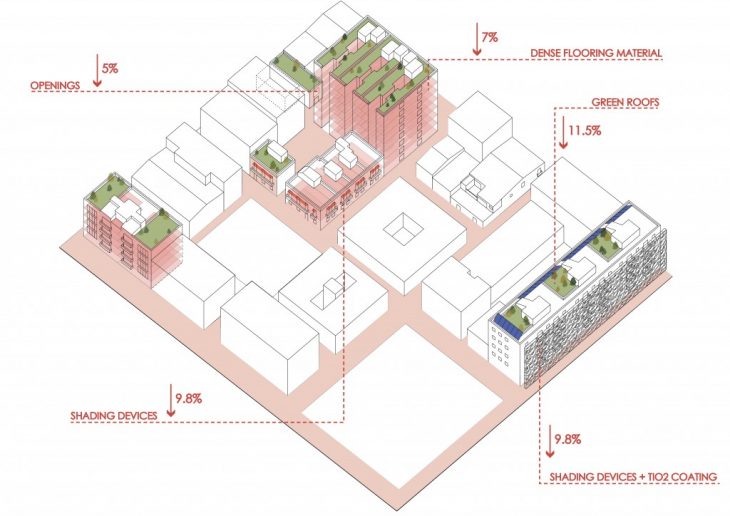
The old town houses 580 people with a total of 145 apartments. According to the municipality’s statistics, each household consumes 8900 kWh/year of energy and 25% of this number is dedicated to electricity consumption. Heating and cooling in Barcelona consumes around 41% of total electricity consumption, which is the highest consumption sector. By retrofitting buildings in the old town, an average of 9% decrease of electricity consumption per household can be reached by providing proper ventilation with openings, enough sunlight in winter and preservation of heat by dense flooring materials, preventing overheating in summer and the use of green roofs.
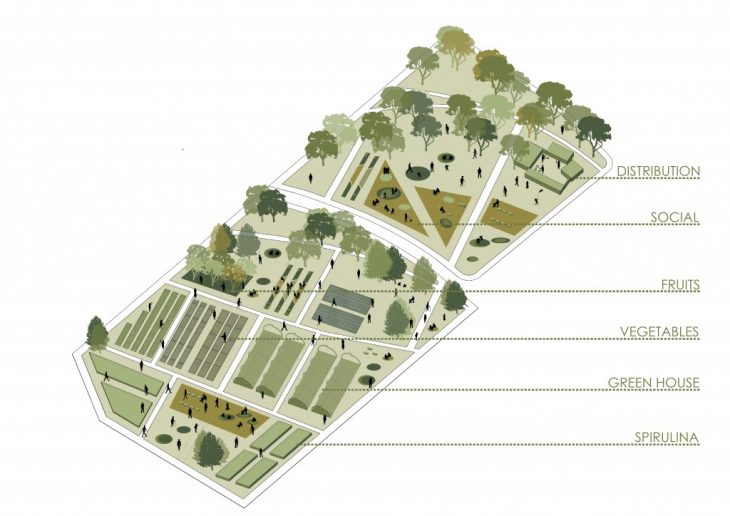
The strategy of the open green area between the old town and the sea is contributing to the sense of community of the neighborhood and their connection to the environment, becoming a new productive neighborhood. It produces its own resources and has a locally centered ecological economy.
1- The production of Spirulina uses CO2 as a primary input and make the area more sustainable by improving the air quality. By photosynthesis, harvesting biomass is done by separating and dewatering the algae cells, extracting the oil and then turned into biofuel.This biofuel collection will be sent to the nearest power plant in the neighborhood which in turn can generate around 10 000 KWH/year of electricity. This cultivation is both a passive and active strategy, that reduces the CO2 and produces energy. 2- An area for urban farming, encouraging citizens into environmental activities through vegetable growing. Some of the vegetables require to be grown in greenhouses with ambient humidity level and temperature. 3- In addition to the existing trees on site, new trees will be planted for fruit production. 4- Creating public spaces and merging them in farming areas has a high environmental value to the city, becoming a new catalyst of public spaces. With awareness activities taking place, the community can be encouraged to grow their own food. 5- On average, a person consumes 200g of vegetables and 40g of fruit per day. We assume that 10m2 of land is needed per person to produce these foods. The urban farming area can indeed produce 35% of the total fruit and vegetable consumption of the neighborhood. These food will be distributed in a market located the historic Placa de Prim, that was once a gathering area for the working class.
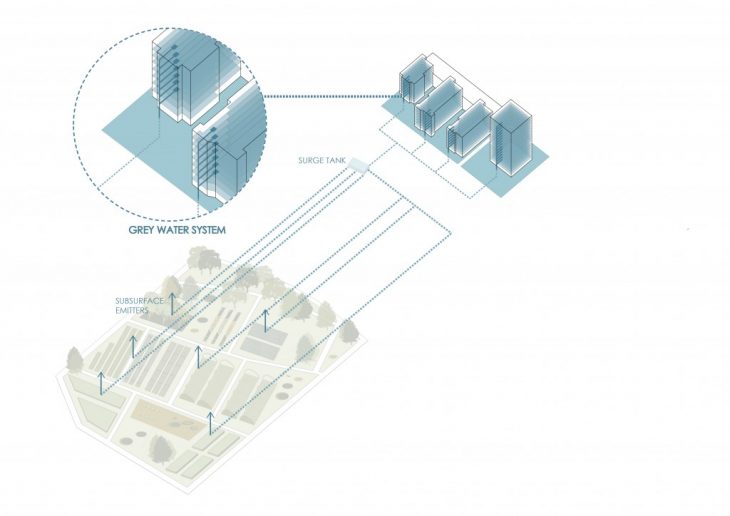 The newly built buildings facing the site will contribute in a new water management system. Grey water will be collected into a surge tank on site and then distributed through different emitters on site for irrigation.
The newly built buildings facing the site will contribute in a new water management system. Grey water will be collected into a surge tank on site and then distributed through different emitters on site for irrigation.

Tidal energy as main energy production and sea water based battery for storage and distribution.
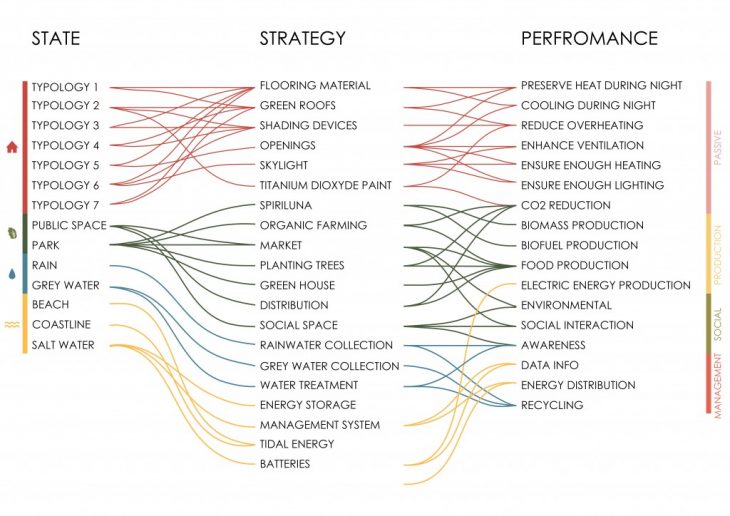

[Patri-mar] Combining heritage and nature for a zero energy future is a project of INTERNET OF CITIES – SELF-SUFFICIENT ENERGY DISTRICT of IaaC, Institute for Advanced Architecture of Catalonia developed at Master in City and Technology in (2018/2019) by: